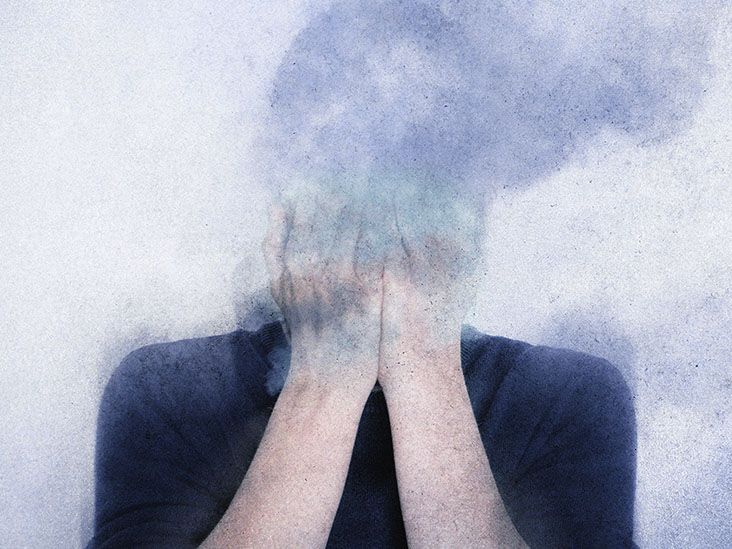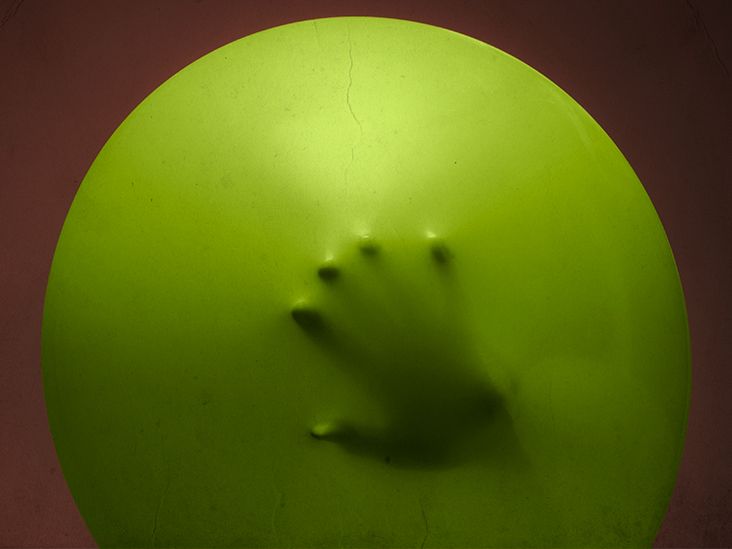Schizophrenia causes symptoms that doctors classify as positive or negative. Positive symptoms of schizophrenia include hallucinations, delusions, and certain changes in thoughts or behaviors.
Worldwide, there are an estimated
Unlike negative symptoms, positive symptoms appear after a person develops schizophrenia and become part of their psyche.
In contrast to some other mental health conditions, schizophrenia is highly treatable with antipsychotic medications, therapy, and other treatment options. However, ongoing treatment is necessary to help manage and prevent symptoms. There are also several ways to identify the positive and negative symptoms of schizophrenia early on.
This article looks in more detail at the positive symptoms of schizophrenia. It also discusses the risks, diagnosis, and treatment of schizophrenia and the overall outlook.
Schizophrenia has both positive and negative symptoms. Positive symptoms are those that affect the individual’s perception of reality. They include:
- delusions
- hallucinations
- strange or inexplicable behavioral changes
- confusion or thought disorder
People with schizophrenia may experience one or more of these symptoms.
Delusions
A delusion is something a person believes without a doubt to be true despite evidence to the contrary. These delusions, which are typically based on something false or unrealistic, often cause the individual to act differently than usual. They may even try to use a delusional idea to justify or explain their actions.
An individual who experiences delusions may believe that there are hidden messages in common, everyday occurrences. They may find a meaning that does not really exist in, for example, the color of someone’s clothes or a media broadcast.
A person with schizophrenia may also have the feeling that someone is watching or following them or talking about them behind their back. As a result, they may become suspicious of close friends or family members. This is sometimes known as paranoid schizophrenia.
A 2019 study of 214 psychiatric outpatients with schizophrenia found that the condition occurred in about 47.7% of individuals. Various environmental and genetic factors may trigger paranoid schizophrenia.
Delusions may continue for several weeks or even months. A 2022 study examining 262 individuals with schizophrenia vs. affective psychosis found:
- 33% experienced a thought delusion
- 38% experienced a thematic delusion
- 45% experienced any delusion
The researchers categorized thought delusions as being related to thought insertion, withdrawal, or referential. They categorized thematic delusions as being related to self-depreciation, nihilism, or grandeur.
Hallucinations
A hallucination is something that does not exist, but the individual still believes they can touch, see, hear, smell, or even taste. One of the most common types of hallucination in people with schizophrenia is an auditory hallucination, which is a term for sounds that a person hears in their head.
These may take the form of voices, which can often be abusive or critical but are sometimes friendly and conversational. Regardless, for most individuals who hear voices, they are as real as they would be if anyone nearby were speaking.
In fact,
Approximately 60% to 80% of people with schizophrenia spectrum disorders report hearing voices.
Thought disorder
Thought disorder is a confused, disorganized way of thinking that may result in a person expressing themself in unusual ways when speaking or writing. It is common in schizophrenia and other psychotic disorders.
Thought disorder relates to a person’s ability to sustain concentration and focus, evaluate situations in a logical and coherent fashion, and plan and execute tasks in a goal-directed and logical way. Both behavior and language can be indicators of thought disorder.
Positive symptoms are those that contribute additional experiences to a person’s overall experience. These changes arose after the individual developed schizophrenia rather than before. This includes added sounds or voices in hallucinations or beliefs in delusions.
Negative symptoms are named as such because they refer to thoughts and behaviors that the individual had before developing schizophrenia but has since lost. In other words, negative symptoms are removed experiences of the person, such as limited speech, social withdrawal, or an inability to express interest or pleasure.
Although the symptoms of schizophrenia vary in terms of severity, people with this condition have an increased risk of negative outcomes. For instance:
- There is a link between schizophrenia and a higher mortality rate due to other medical conditions, such as cardiovascular disease, lung cancer, and chronic obstructive pulmonary disease. This may be due to mismanagement of modifiable risk factors.
Approximately 50%Trusted Source of all people with schizophrenia have a second mental health condition or behavioral disorder, such as depression, substance misuse, or anxiety.- People with schizophrenia may have an increased risk of suicide, particularly around the onset of the illness.
Moreover, those with schizophrenia may have a higher financial burden due to the costs of treating the condition. They may also experience apathy, withdrawal from society, and a lack of productivity. These symptoms, in turn, can lead to unemployment or other financial crises.
Help is out there
If you or someone you know is in crisis and considering suicide or self-harm, please seek support:
- Call or text the 988 Lifeline at 988 or chat at 988lifeline.org. Caring counselors are available to listen and provide free and confidential support 24/7.
- Text HOME to the Crisis Text Line at 741741 to connect with a volunteer crisis counselor for free and confidential support 24/7.
- Not in the United States? Find a helpline in your country with Befrienders Worldwide.
- Call 911 or your local emergency services number if you feel safe to do so.
If you’re calling on behalf of someone else, stay with them until help arrives. You may remove weapons or substances that can cause harm if you can do so safely.
If you’re not in the same household, stay on the phone with them until help arrives.
Aside from the more widely known positive symptoms of schizophrenia, there are also lesser-known
- extreme apathy
- lethargy
- inappropriate emotional responses, such as laughing at something sad or crying at something happy
- withdrawal from social settings or loved ones
- speech reduction or muteness
- decreased libido
- inattentiveness or lack of concentration
Although they receive less media attention, these negative symptoms also greatly affect the individual’s quality of life and ability to live as usual. Without treatment, many people have difficulty coping with these symptoms.
Once a person starts experiencing delusions, fully realized hallucinations, thought disorder, and hyperactive behavior, the condition becomes easier to diagnose.
Diagnosis usually includes some or all of the following:
- complete medical exam
- cognitive or personality tests
- urine and blood tests to help rule out other possible causes, such as drug or alcohol abuse
- CT scans or MRI scans to reveal hidden other issues, such as a brain tumor
Doctors will only diagnose schizophrenia if a person has consistently experienced at least two of the positive symptoms of schizophrenia in the past month and has experienced these symptoms for the past 6 months.
In general, it is
Various treatment options exist for individuals with schizophrenia. These treatments include medication, psychological and social intervention, and therapy.
Medication
A doctor may prescribe
Alternatively, the doctor may prescribe antidepressants or anti-anxiety drugs to help manage certain symptoms.
Intervention
Even with the proper medication and dosage, individuals with schizophrenia may still require psychosocial interventions in the form of individual or family therapy. Psychosocial intervention isn’t effective as the only method of treatment and should take place alongside medication. They may also need vocational or societal rehabilitation. Depending on the case, the individual may require ongoing assisted living or day-to-day support.
Other treatment options
Some doctors recommend electroconvulsive therapy (ECT) to help treat schizophrenia.
In extreme cases, or when the individual is a danger to themself or others, they may require hospitalization.
Without treatment, schizophrenia may become more complicated and progress into major health problems that could affect other aspects of day-to-day living. However, although there is no way to prevent schizophrenia, there are ways to manage the disorder, such as:
- working with a doctor to create a strict treatment plan and sticking to it
- seeking professional aid
- cutting out harmful substances such as drugs or alcohol, if applicable
- seeking positive support from loved ones
Even if the symptoms diminish over time with proper medication, schizophrenia necessitates lifelong, ongoing treatment.
Schizophrenia is a nonpreventable, challenging mental disorder, but it is treatable.
The positive symptoms include hallucinations, delusions, illogical changes in behavior or thoughts, and thought disorder.
Negative symptoms include apathy, lethargy, and withdrawal from social events or settings. Without treatment, these symptoms have an association with major problems, such as homelessness, life threatening illness, or even suicide.
However, there are many existing treatment options, such as antipsychotics and psychosocial interventions. With proper and early treatment, individuals with the condition can lead a healthy, full life, although some may require living assistance.



